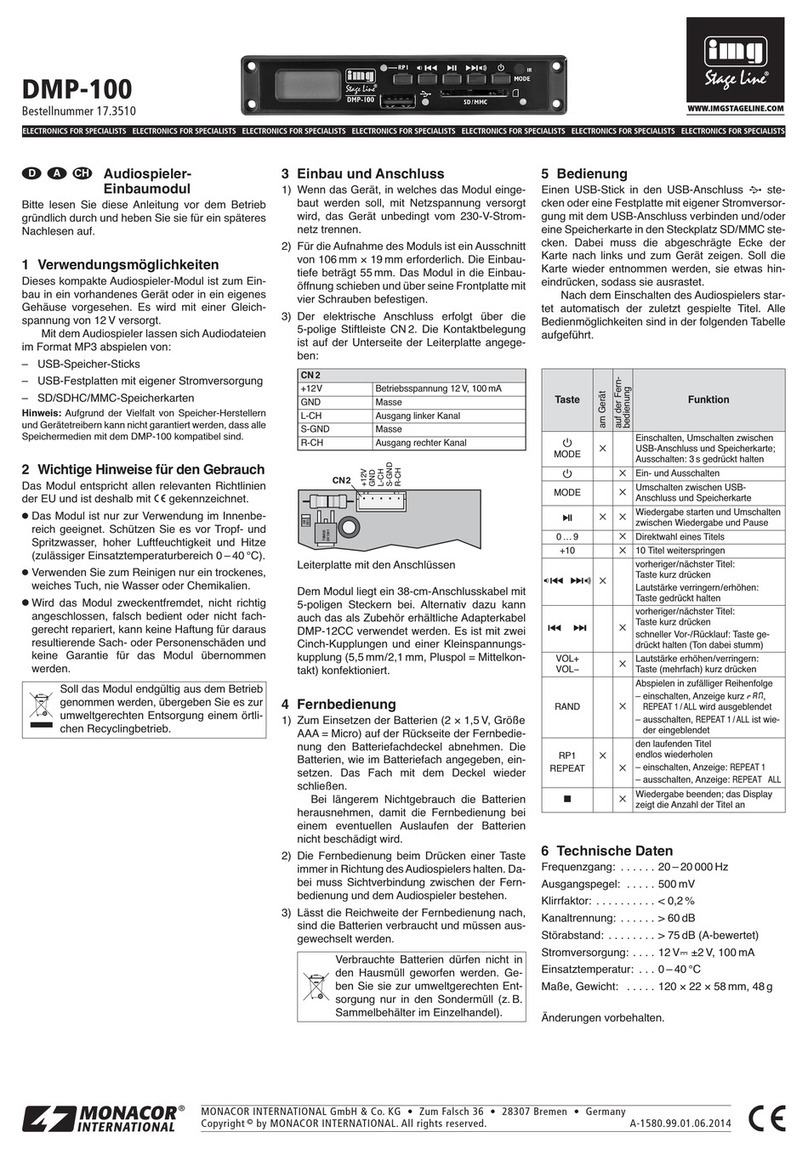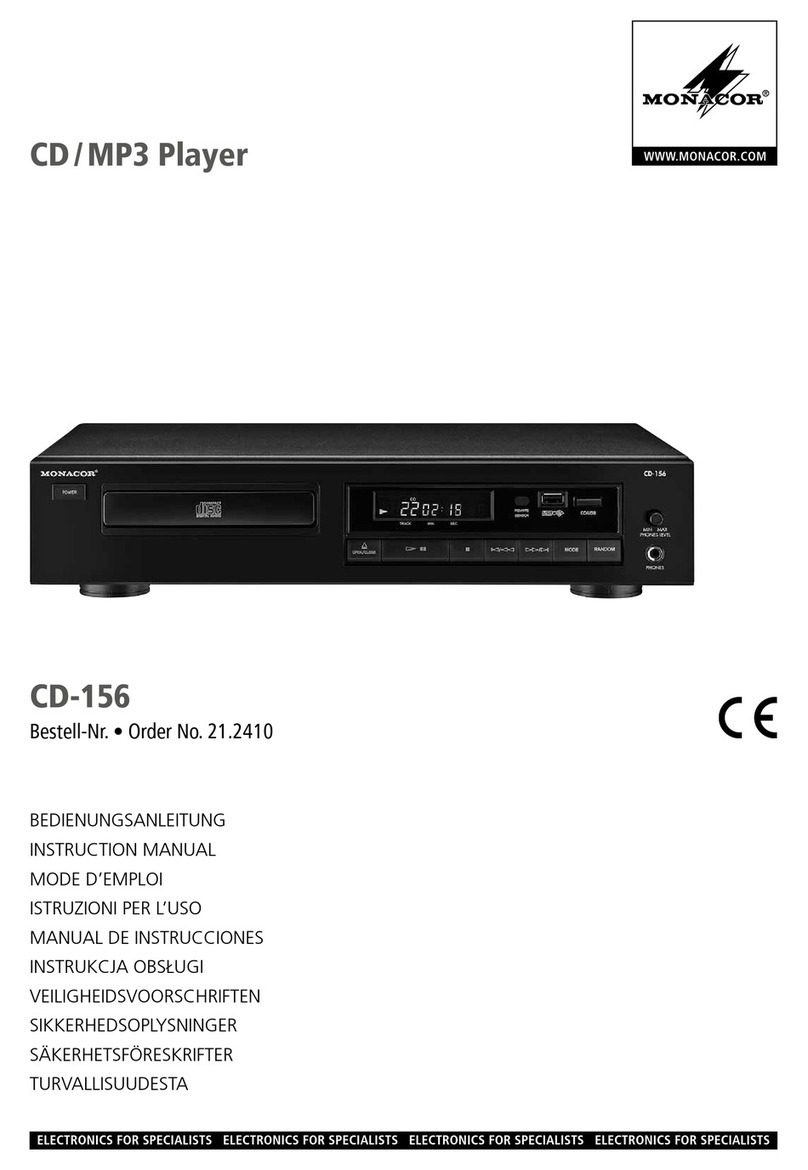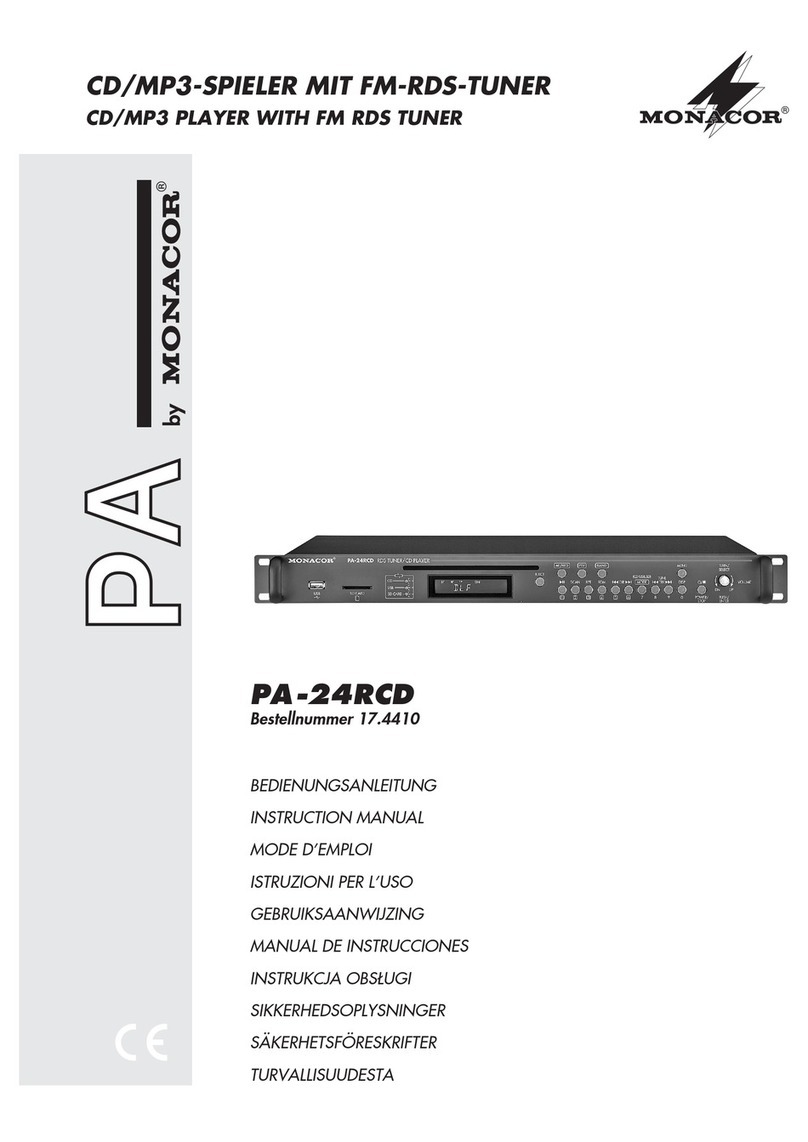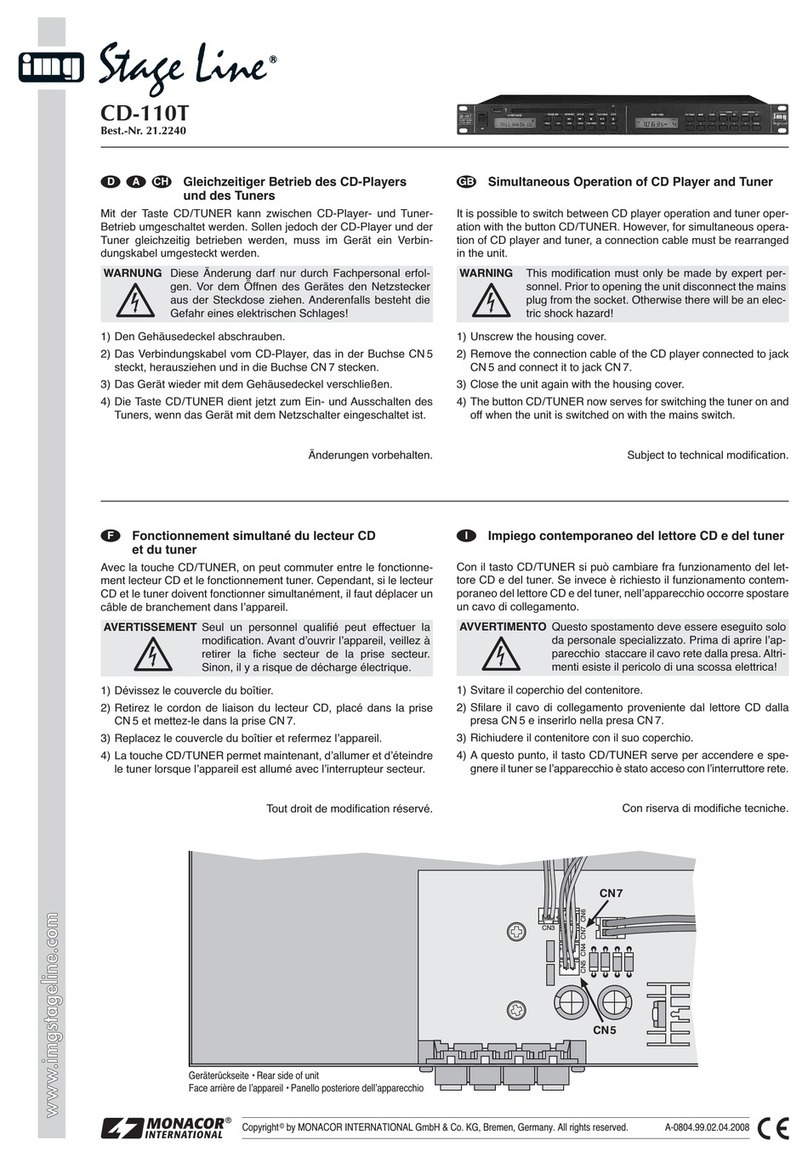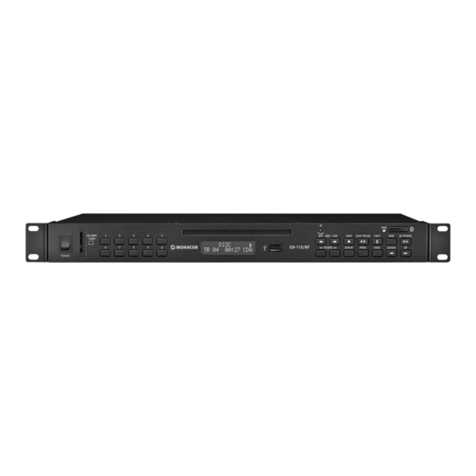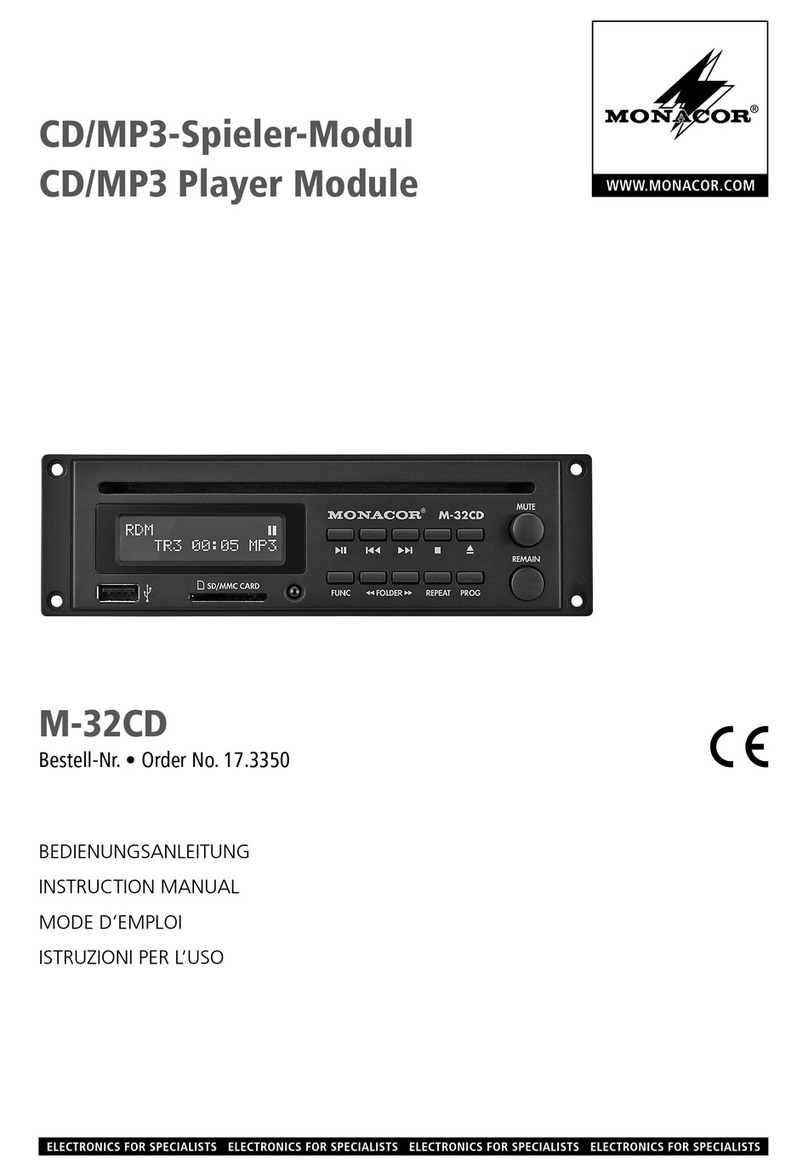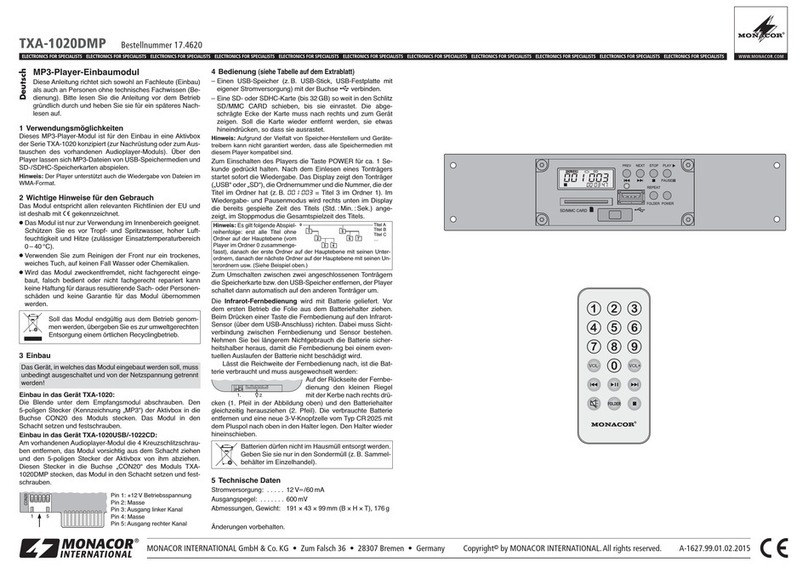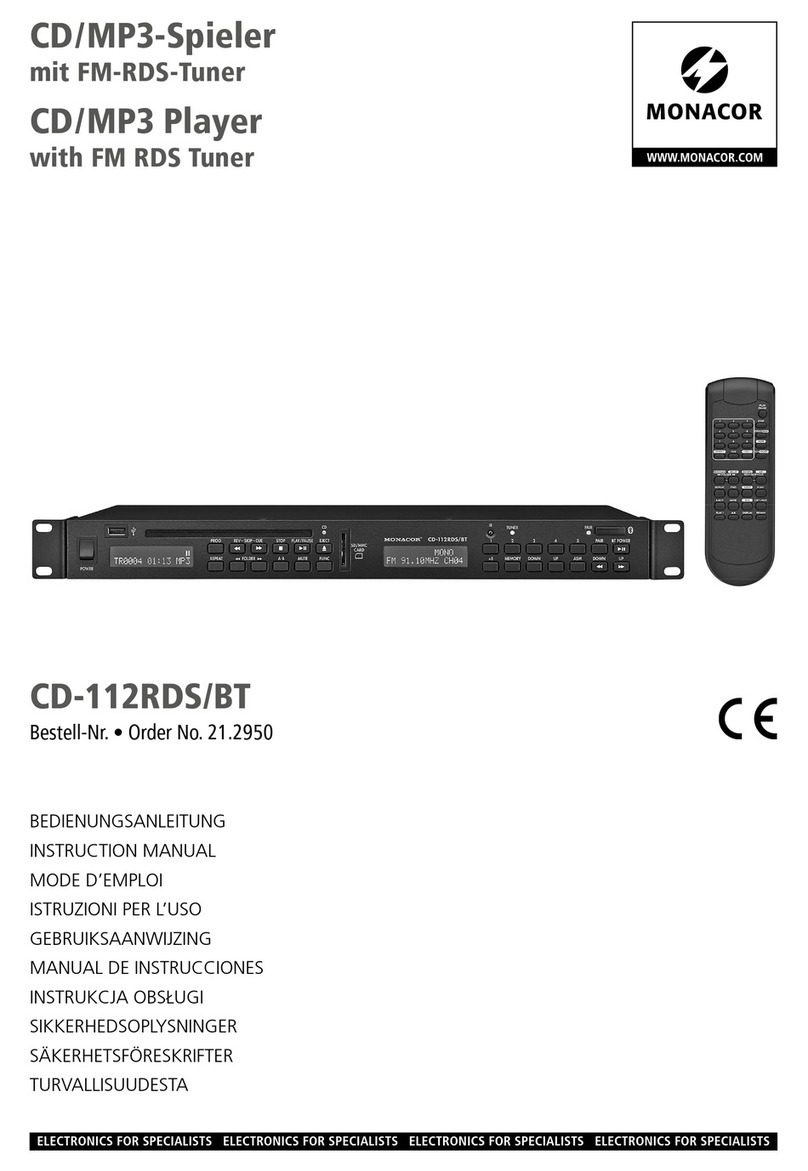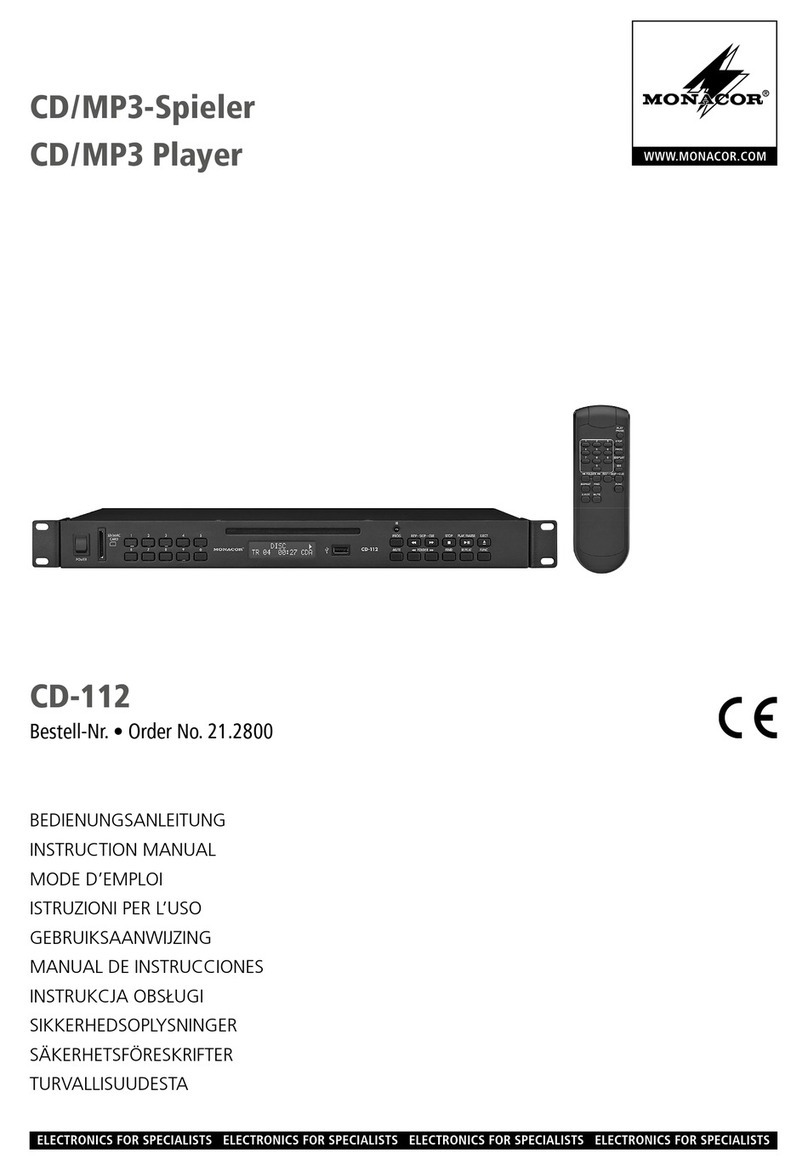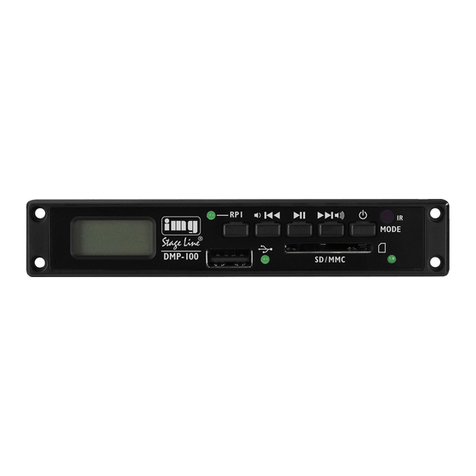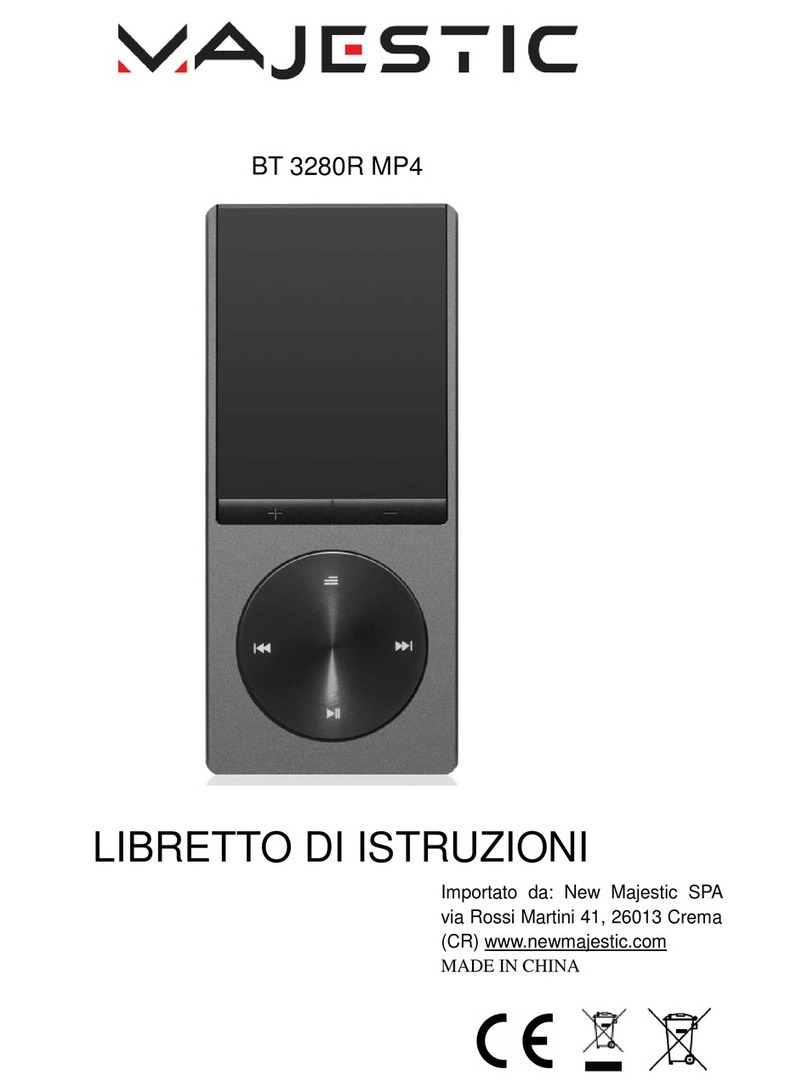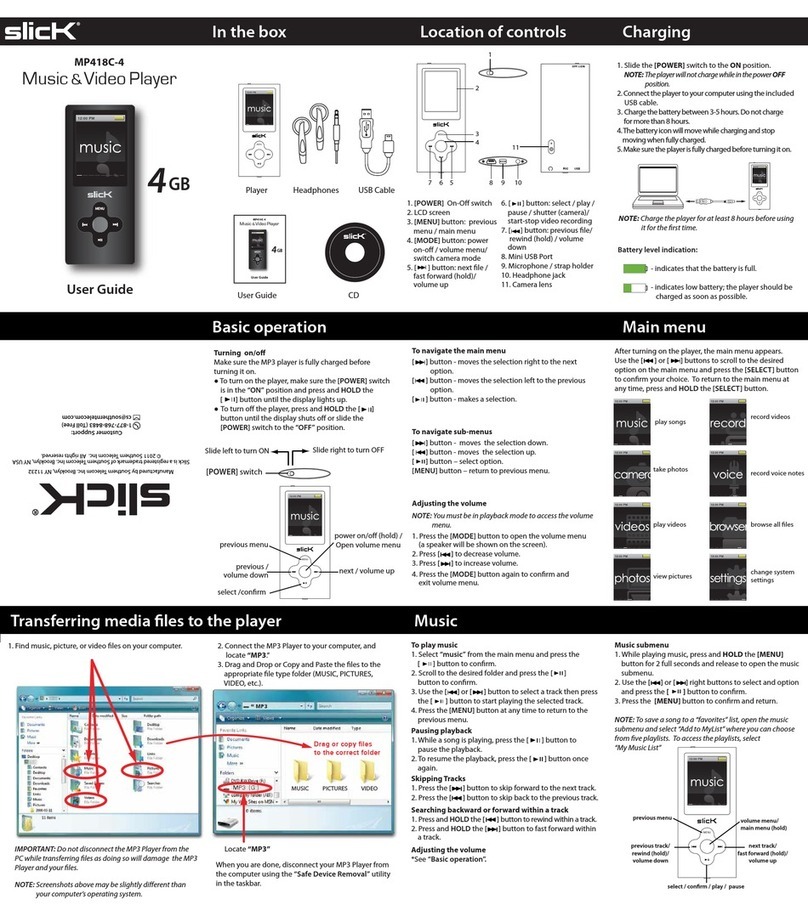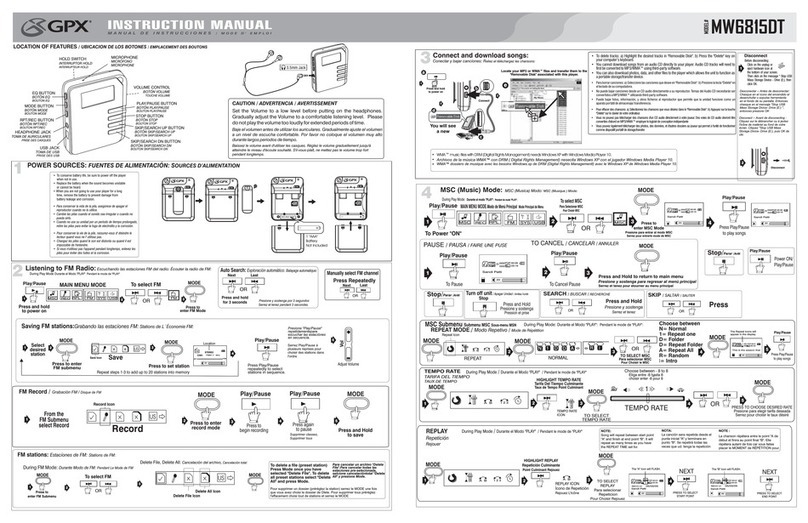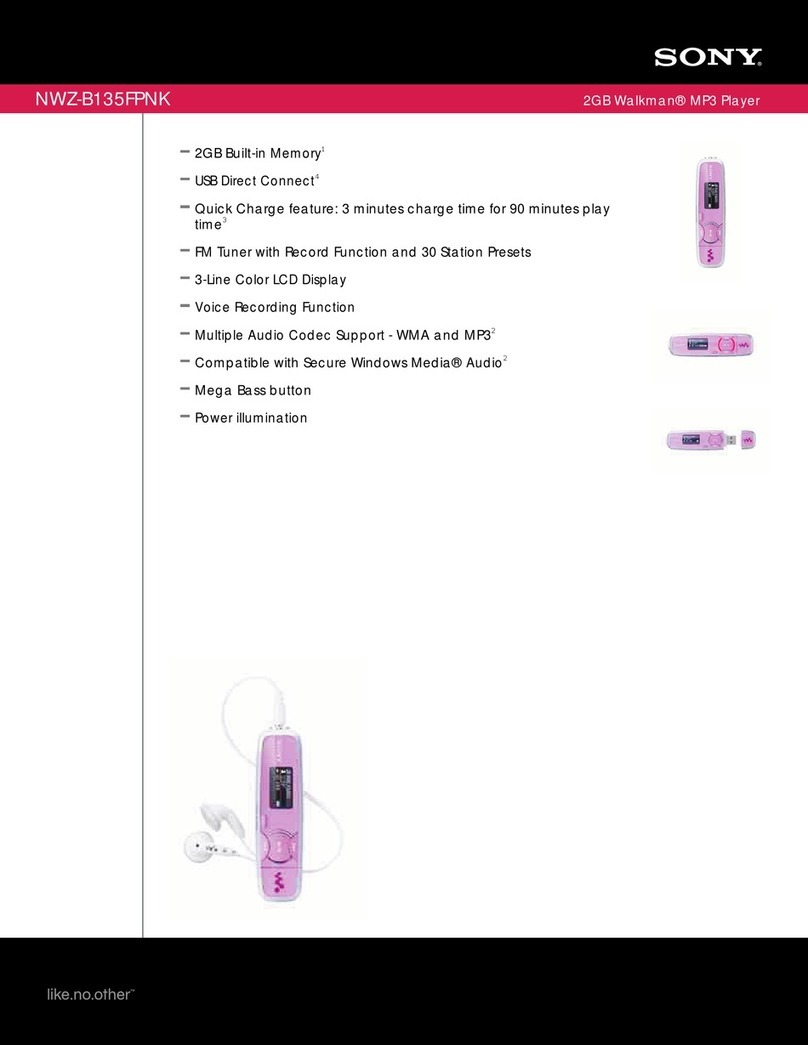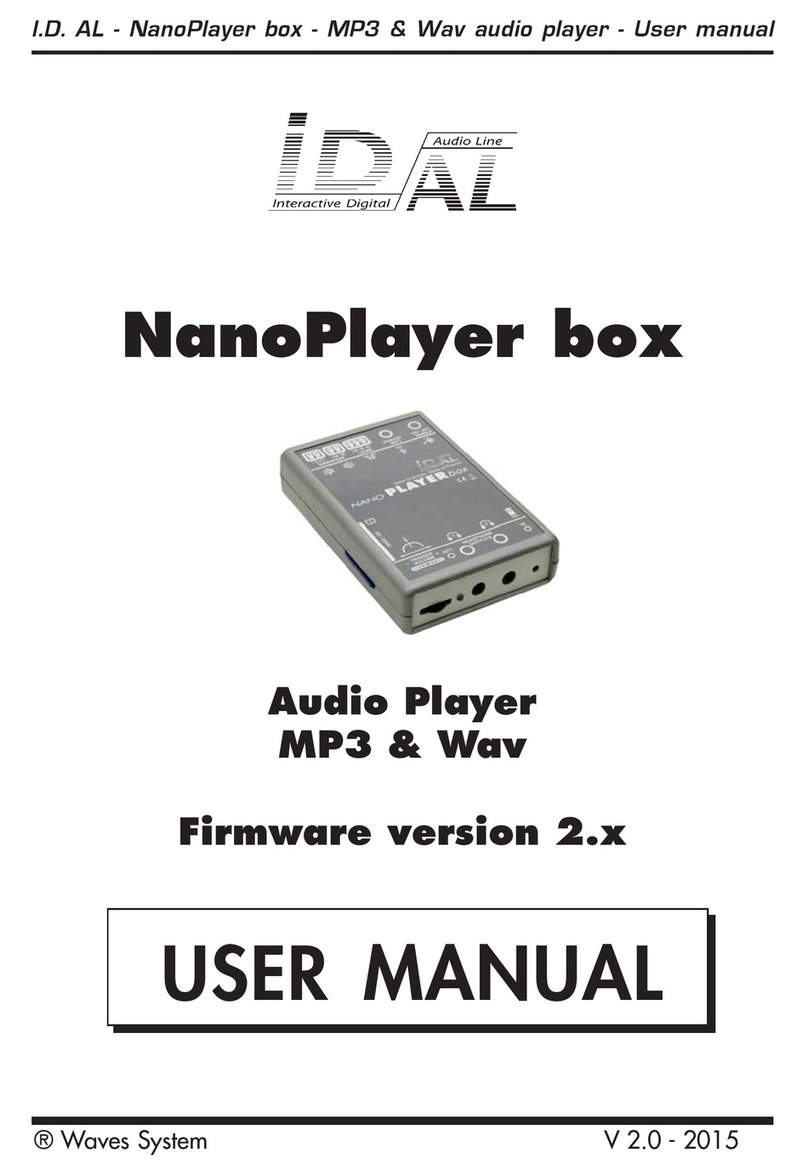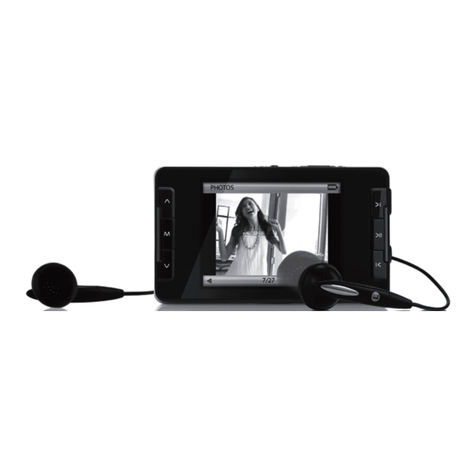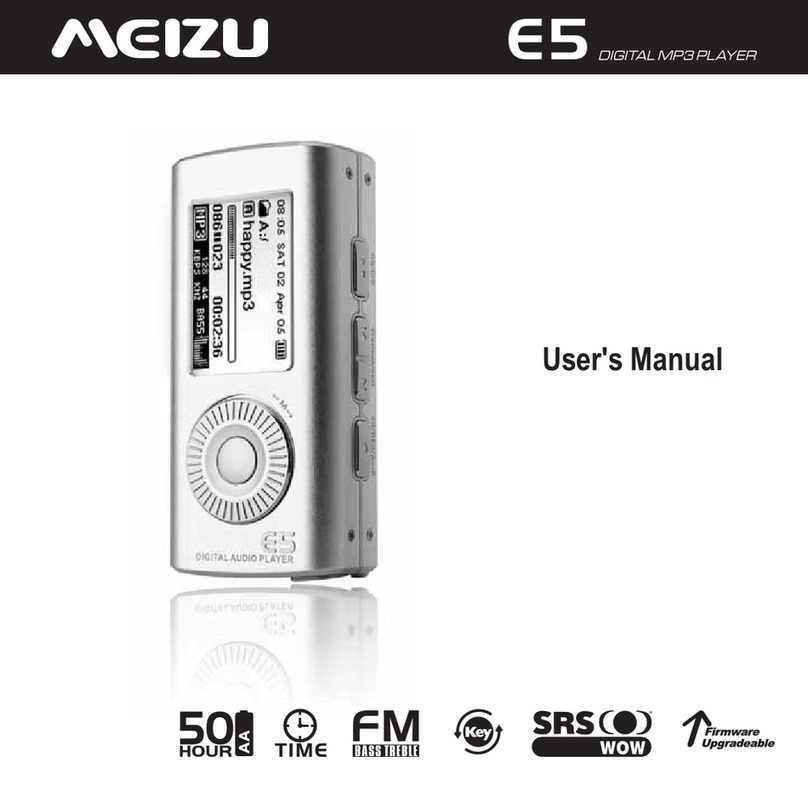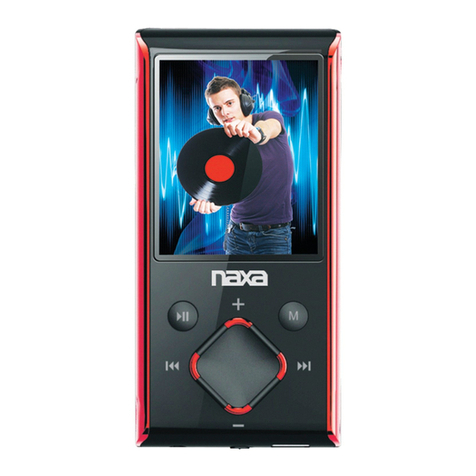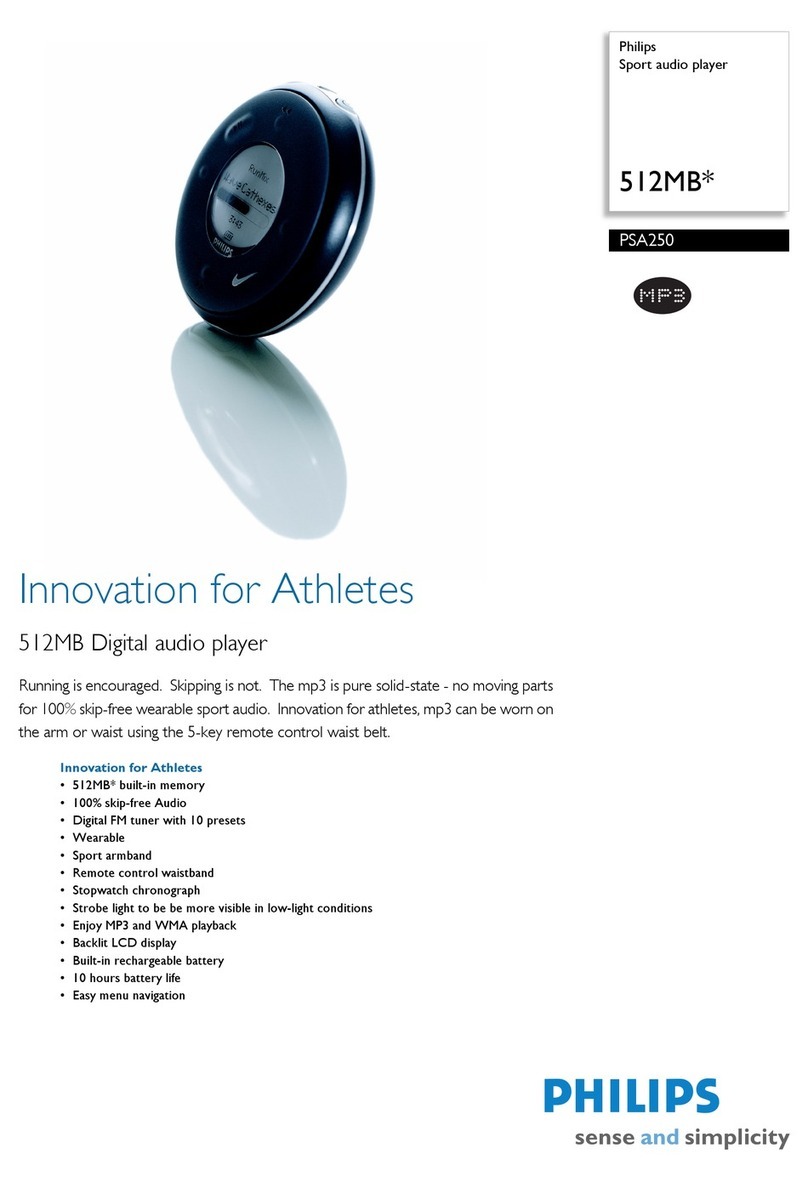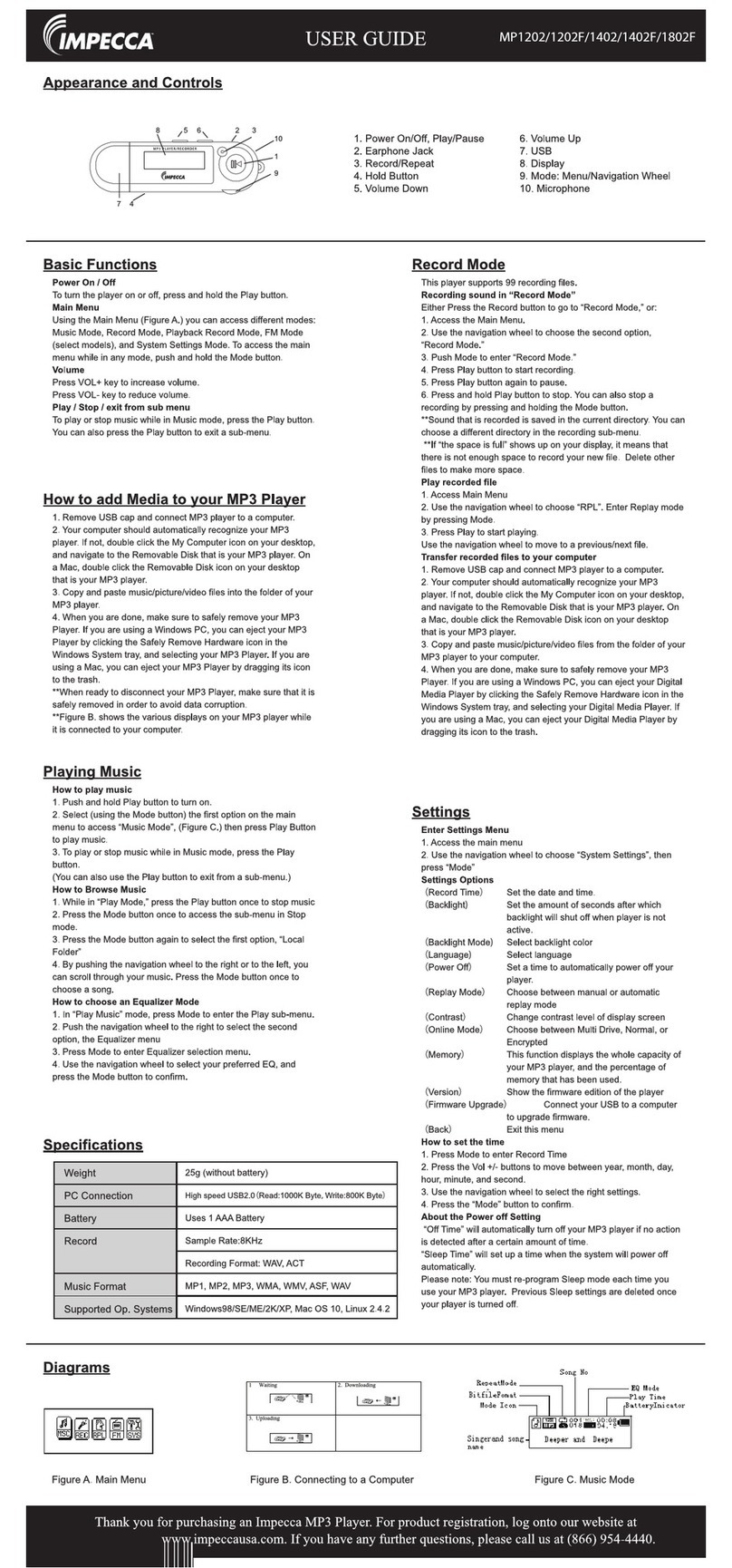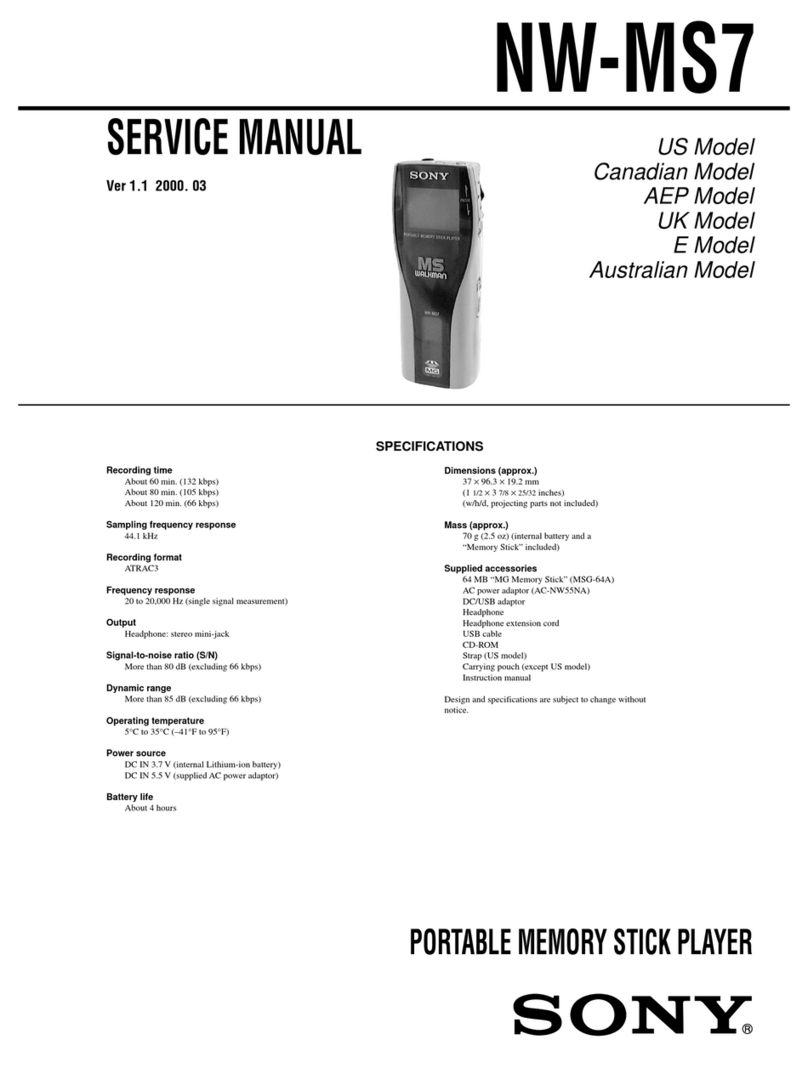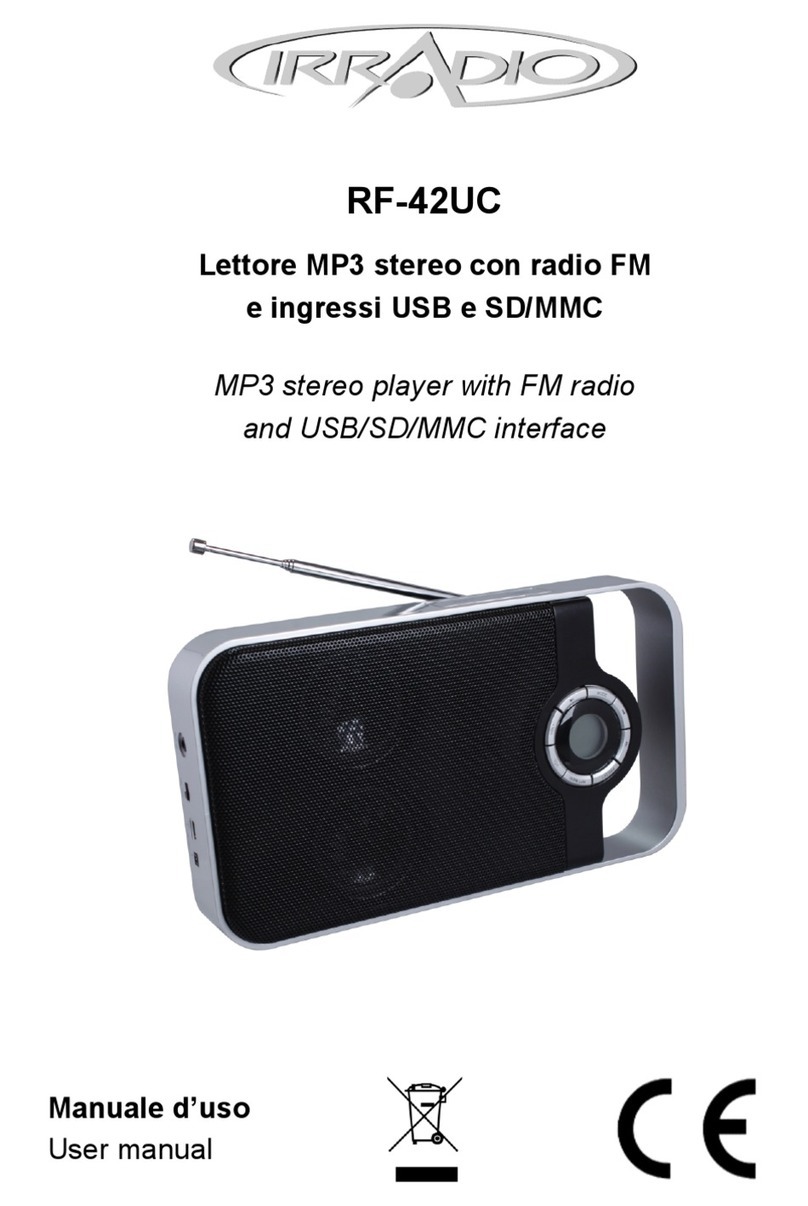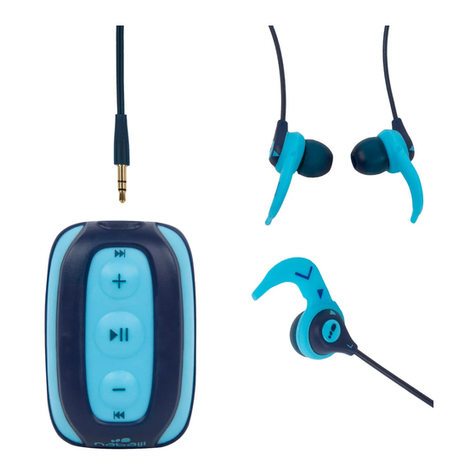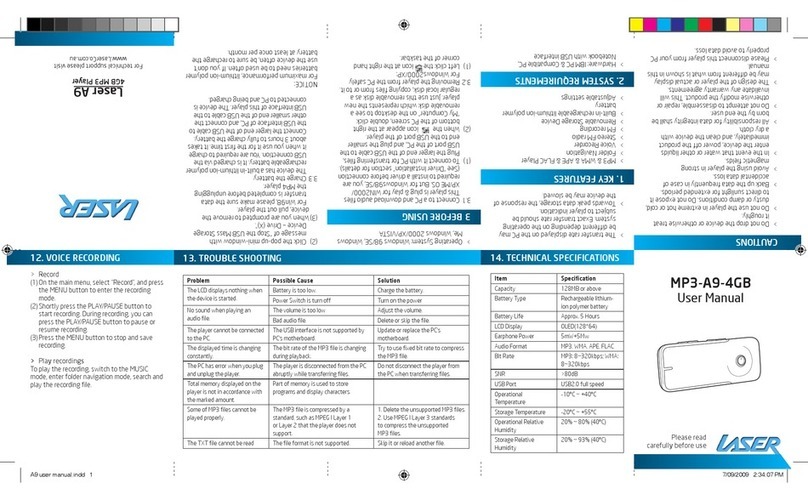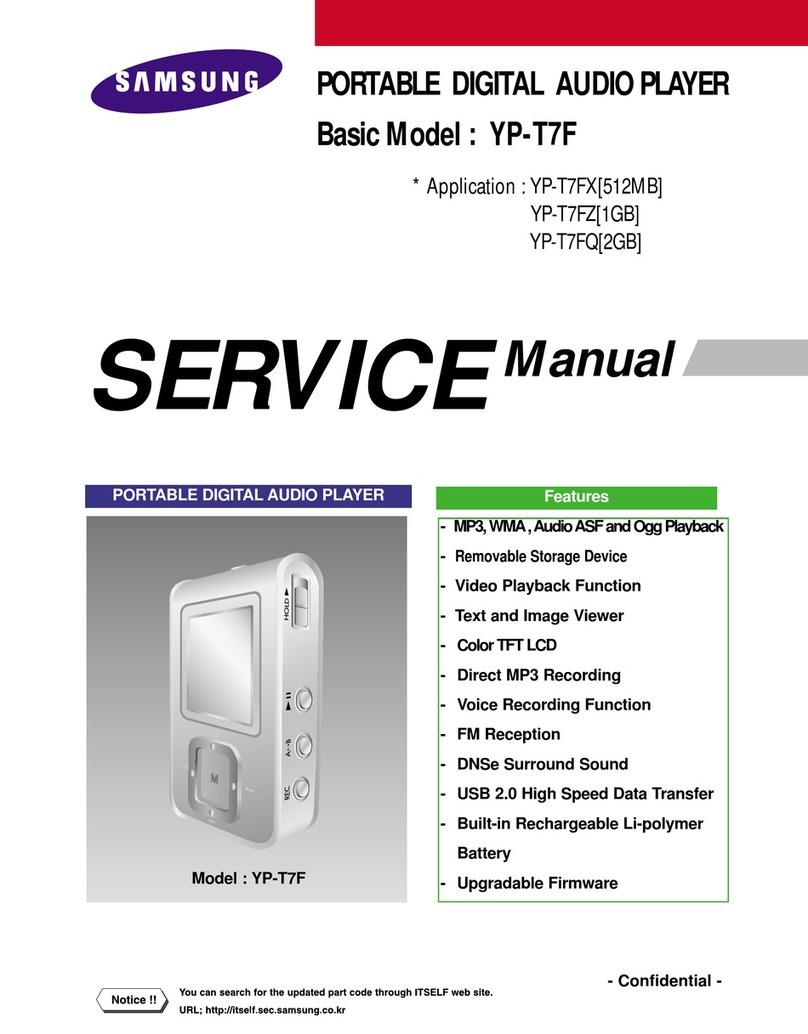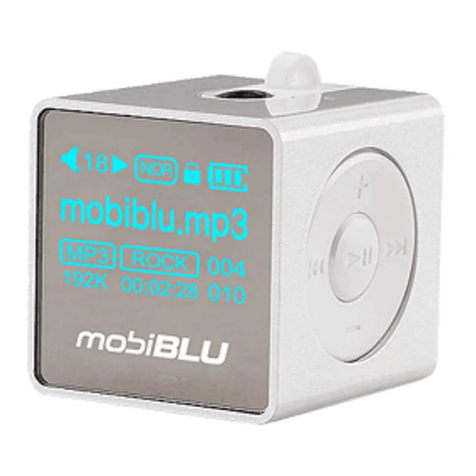
7
Deutsch
5.1.7 Hinweis zu Tonaussetzern und Lesefehlern
Zigarettenrauch und Staub dringen leicht durch alle
Öffnungen des Gerätes und setzen sich auch auf der
Optik des Laser-Abtastsystems ab. Sollte dieser Belag
zu Lesefehlern und Tonaussetzern führen, muss das
Gerät in einer Fachwerkstatt gereinigt werden. Diese
Reinigung ist kostenpflichtig, auch während der
Garantiezeit!
5.2 Bedienung des Tuners
Sobald eine CD eingeschoben oder ein USB-Stick
eingesteckt wird, schaltet das Gerät automatisch auf
die Wiedergabe von der CD bzw. von dem USB-Stick
um. Mit der Taste MODE (3) lässt sich dann zwischen
Radioempfang und Wiedergabe von der CD bzw.
von dem USB-Stick umschalten.
5.2.1 Sender einstellen und speichern
Mit dem Tuner können UKW- und Mittelwellensen-
der empfangen werden. Damit sich mit den sechs
Stationstasten (6, 7, 8, 14, 15) mehr als sechs Sender
speichern lassen, ist der UKW-Bereich in drei identi-
sche Unterbereiche aufgeteilt. In den drei Unterberei-
chen (F1, F2, F3) und im Mittelwellenbereich (MW)
können jeweils sechs Sender gespeichert werden,
somit insgesamt 18 UKW- und 6 Mittelwellensender.
1)
Mit der Taste BAND (4) auf den gewünschten
Bereich schalten. Am übersichtlichsten ist es,
zuerst im Bereich F1 sechs Sender zu speichern
und dann auf den Bereich F2 umzuschalten und
danach auf F3.
2)
Ein Sender lässt sich mit dem Sendersuchlauf fin-
den oder manuell einstellen:
Zum Starten des Sendersuchlaufs die Taste (11)
(vorwärts) oder (rückwärts) kurz drücken. Der
Sendersuchlauf läuft bis zum nächsten Sender.
Während des Suchlaufs zeigt das Display SEARCH
an. Den Suchlauf so oft erneut starten, bis der
gewünschte Sender empfangen wird.
Zur manuellen Sendereinstellung die Taste
oder
gedrückt halten, bis im Display kurz MANUAL
angezeigt wird. Danach lässt sich die Empfangs-
frequenz mit jedem Tastendruck schrittweise erhö-
hen oder verringern (im UKW-Bereich um 50kHz,
im Mittelwellenbereich um 9kHz). Um manuell
schnell einen großen Bereich zu durchlaufen, die
Taste oder gedrückt halten. Nach dem ma-
nuellen Einstellen schaltet das Gerät nach einigen
Sekunden wieder auf automatischen Suchlauf
um, wenn nicht zuvor die Taste oder erneut
gedrückt wird. Das Display signalisiert kurz AUTO.
3)
Ist der Sender eingestellt, die gewünschte Ziffern-
taste (6, 7, 8, 14, 15) so lange gedrückt halten,
bis rechts im Display die Stationsnummer und die
Anzeige „ch“ erscheinen (siehe Abb. 1). Der Sen-
der ist dann unter dieser Nummer im jeweiligen
Unterbereich abgespeichert.
5.2.2 Gespeicherte Sender aufrufen
1)
Mit der Taste BAND (4) den Bereich wählen, in
dem der gewünschte Sender gespeichert wurde.
2)
Die Stationsnummer des Senders mit der entspre-
chenden Zifferntaste (6, 7, 8, 14, 15) wählen.
3)
Mit dem Lautstärkeregler LEVEL (17) die ge-
wünschte Lautstärke einstellen.
4) Bei einer Stereosendung erscheint oben links im
Display ST.
5.2.3 RDS-Funktionen
Strahlt der gewählte Sender RDS-Informationen
(radio data system) aus, wird im Display der Sen-
dername anstelle der Frequenz angezeigt. Einige
Sender geben im Wechsel mit dem Sendernamen zu-
sätzliche Informationen an, z.B. Musiktitel, Interpret.
Bietet ein Sender Verkehrsfunk an, erscheint im
Display die Anzeige TP (traffic program). Wird EON
(enhanced other networks) angezeigt und ein Pro-
gramm empfangen, das zurzeit keinen Verkehrsfunk
bietet, schaltet der Tuner automatisch auf ein ande-
res Programm der gleichen Sendeanstalt um, wenn
dort Verkehrsmeldungen durchgegeben werden.
Nach der Verkehrsdurchsage schaltet das Gerät wie-
der auf das vorherige Programm zurück.
Informationen
Mit der Taste DISP (12) lassen sich folgende Infor-
mationen anzeigen:
1. Tastendruck Anzeige der Uhrzeit
Wird keine Uhrzeit gesendet, zeigt das Display
NO CLOCK. Weil die Uhrzeit nicht kontinuierlich
gesendet wird, kann es nach dem Einschalten
des Radios einige Minuten dauern, bis die Uhrzeit
verfügbar ist.
2. Tastendruck Anzeige des Bereichs (F1, F2, F3,
MW) und der Senderfrequenz
3. Tastendruck Anzeige des Programmtyps
Wird vom Sender kein Programmtyp angegeben,
zeigt das Display PTY NONE.
4. Tastendruck Sendername (Grundeinstellung)
Das Display schaltet auch 5 Sek. nach dem letzten
Tastendruck auf die Grundeinstellung zurück.
Diese Informationen lassen sich auch während der
Wiedergabe von einer CD bzw. von einem USB-Stick
mit der Taste DISP anzeigen.
Alternativfrequenzen
Erscheint im Display kontinuierlich AF (nicht blin-
kend), wird das Programm auch auf Alternativfre-
quenzen umliegender Sender ausgestrahlt. Das
